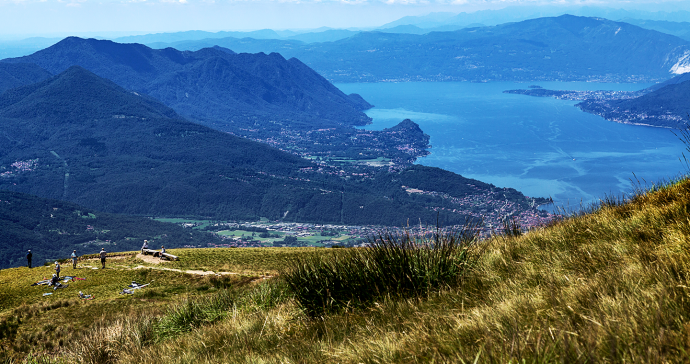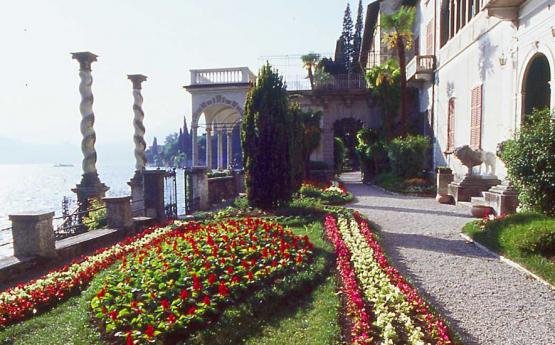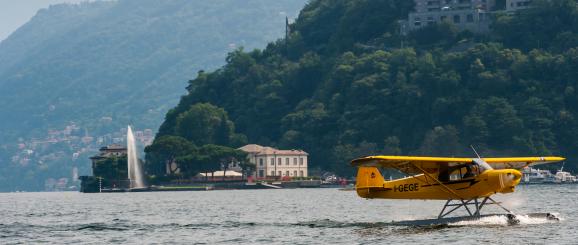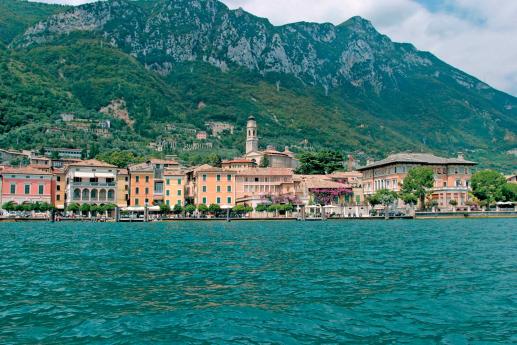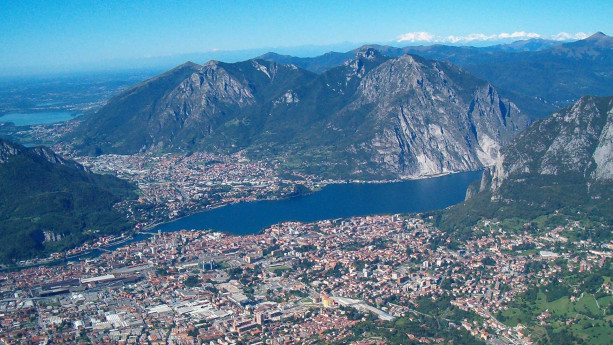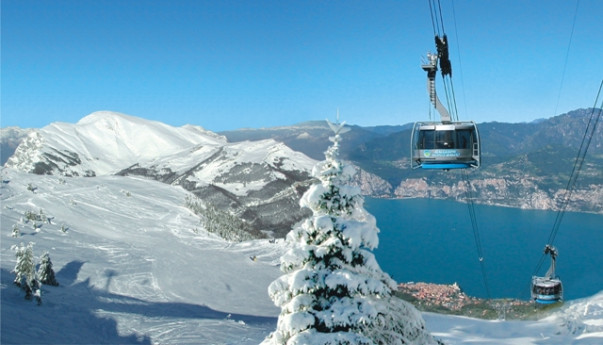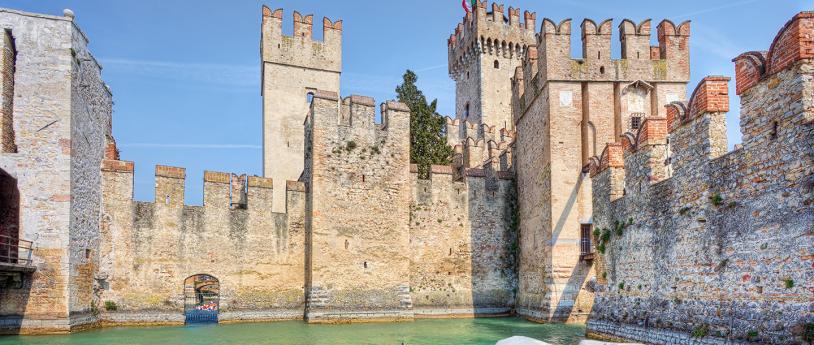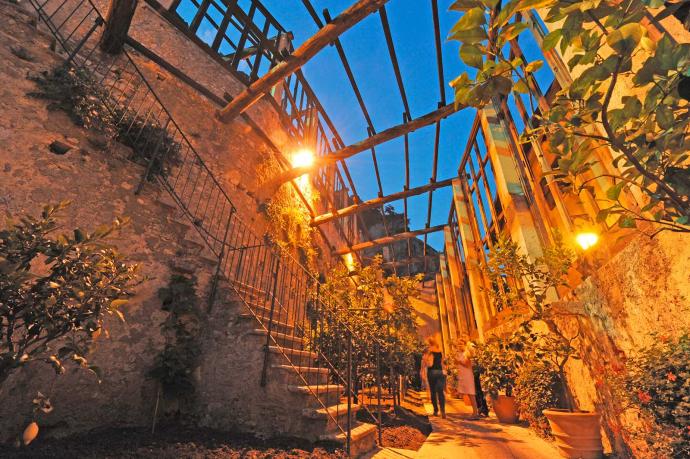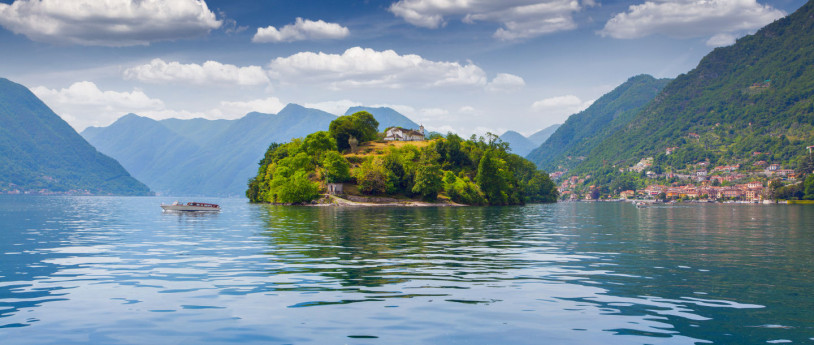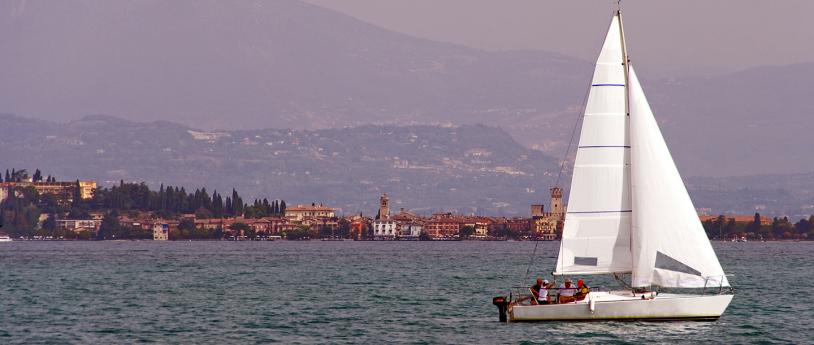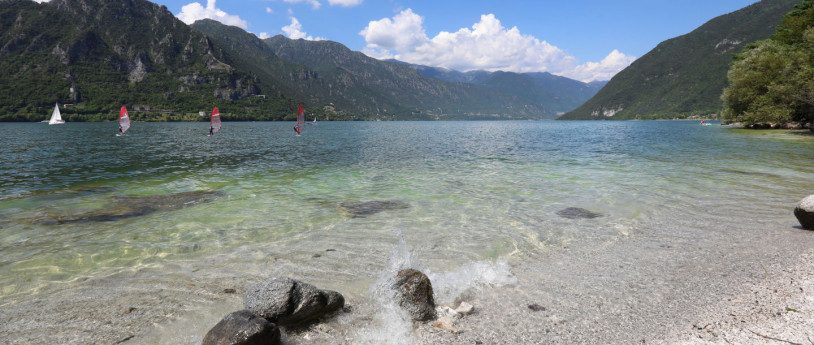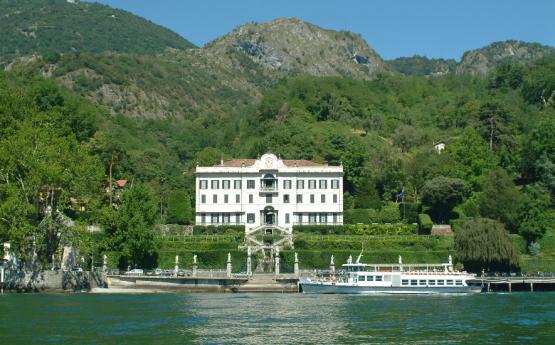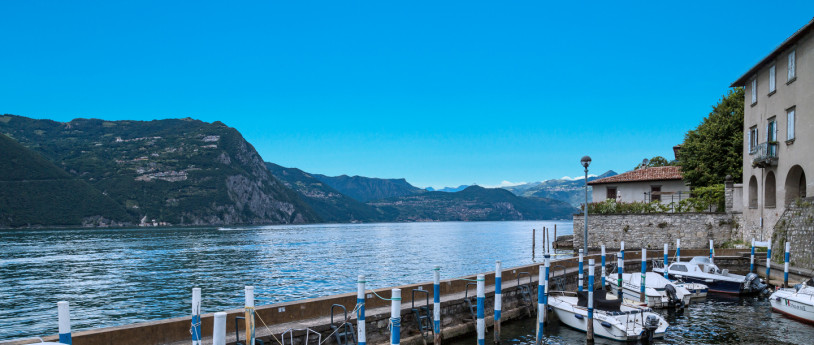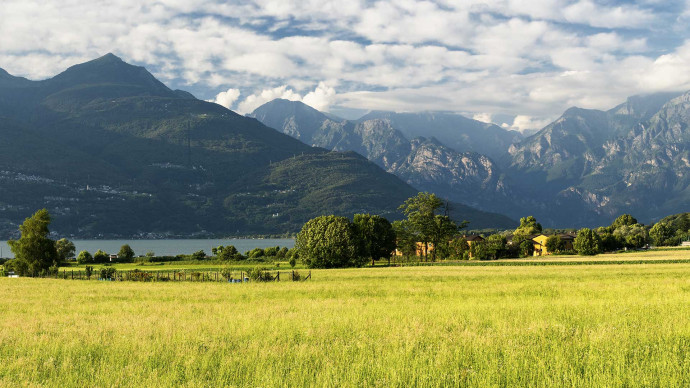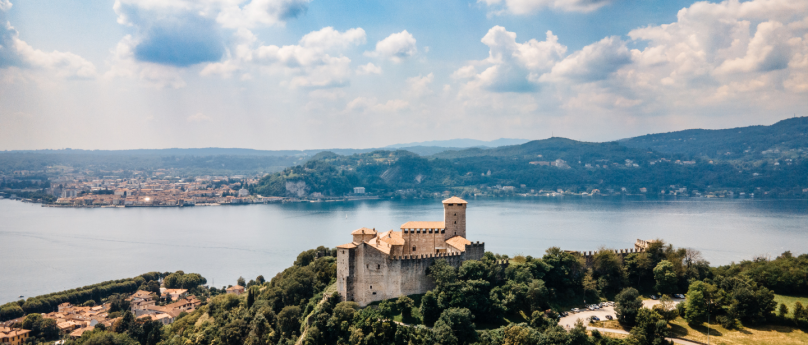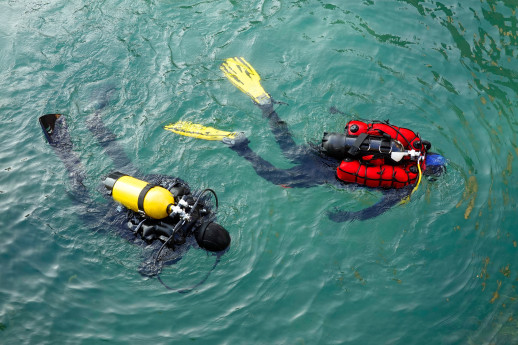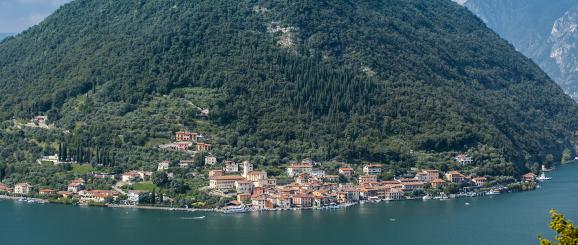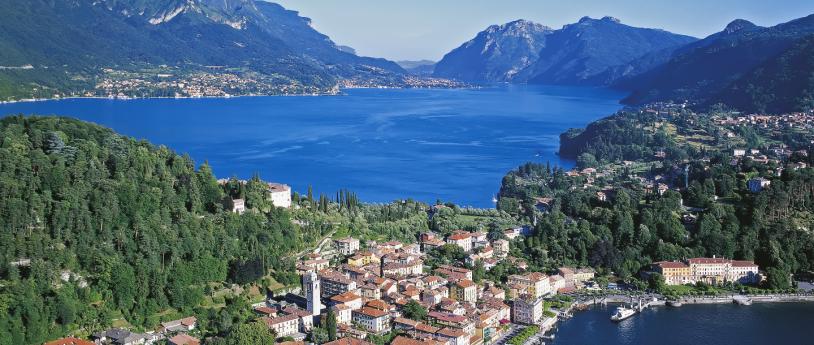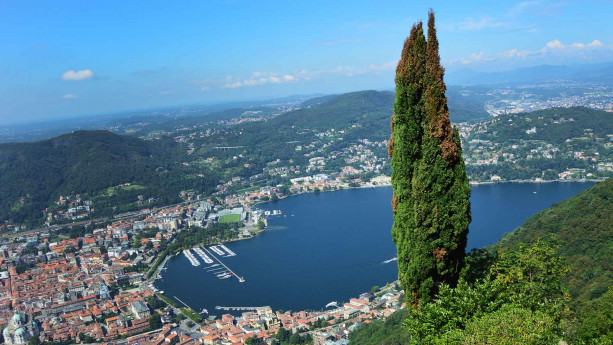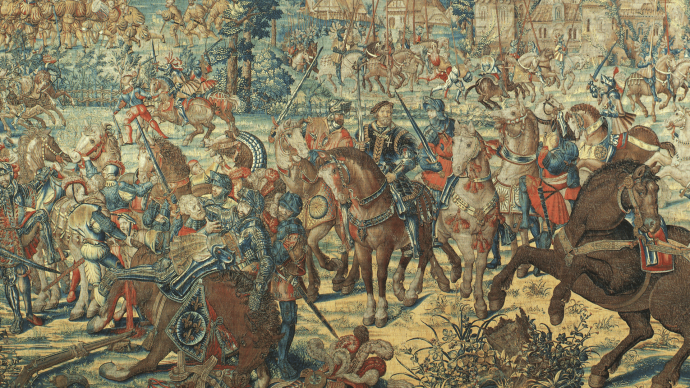- Lakes
- Art & Culture
Lago di Como: charmingly seductive
Described by Stendhal as ‘voluptuous’, the south-western branch of Lake Como charms with its gardens, villas and breath-taking views.
The Duomo di Como, or Como Cathedral, skilfully constructed using late Gothic, Renaissance and Baroque elements, and the Tempio Voltiano temple, built to mark
the centenary of Alessandro Volta's death, summarise the spirit of Como perfectly: a medieval town that reached out to the world with the brainchild of the battery, defined
by Einstein as the basis of all modern inventions.
The neoclassical Volta Temple, evidently influenced by Andrea Palladio, nestles on the lake’ shore. It displays original (and replica) scientific instruments belonging to the great scientist, along with documents and other items illustrating his life.
Before arriving at the Duomo, it's worth detouring from the fascinating shoreline route to take in the Novocomum, the condominium designed by Giuseppe Terragni that is one of Italy's first examples of modern architecture.
It is to Terragni that the Itinerario razionalista (Rationalist tour) - which includes buildings such as the former Casa del Fascio, the Monument to the Fallen and the Sant'Elia kindergarten - is dedicated.
The island
Lake Como's only island, the tiny Isola Comacina, has a long and intricate history. In Roman and medieval times it acted as both a military base and a key religious centre.
In alliance with Barbarossa, the Comaschi (people of Como) later razed it. Its rediscovery came in the 20th century when Pietro Lingeri built three “artists' houses” in the rationalist style, leading to the discovery of a fascinating archaeological heritage. Stunning views and lush vegetation make the island a must-see.
All aboard!
Just getting there is a thrill. From Como, a funicular railway, in service since 1894, climbs
700 metres to Brunate, a gorgeous borgo dotted with numerous art nouveau (or 'Stile Liberty' in Italy) style villas, the main protagonists of a clearly marked itinerary. Another must-see is the Faro Voltiano lighthouse in San Maurizio, a 29 metre high octagon-plan tower built to mark the centenary of Alessandro Volta's death. A climb to the top of its 143-step spiral staircase rewards the visitor with astounding views not just of the lake but also the Alps beyond (on a clear day Monte Rosa is visible).
Sheer beauty
One of Italy's most beautiful villages, Tremezzina is spellbinding, its natural and man-made beauty almost overwhelming. Verdant gardens, water and stone merge to compose a unique symphony. Superb palazzi (Villa Carlotta, Villa Mayer with
its publicly owned Teresio Olivelli park, Villa Amila, designed by Pietro Lingeri to look like a ship sailing through the woods), spinning mills, the scent of
lemons and a kaleidoscope of azaleas, hydrangeas and camellias offer a unique experience that has been enjoyed since the 1700s when Tremezzinawas a favourite with the European bourgeoisie.
On-the-go quiz
Kids, keep your eyes peeled in Menaggio, the gorgeous village located half-way up the lake's western shore. The Tourist Office offers a fascinating 'historical quiz' that takes you through the streets of the village and its environs. Getting the right answers will require attentive observation and involve drawing what you see, from the castle to Luigi Tagliaferri's frescoes in the church of Santo Stefano.
Pirates ahoy!
Today, all that remains of the 'Medeghino' castle in Musso are its ruins. Yet it's easy to imagine the exploits of brigand Gian Giacomo de’ Medici (the diminutive Medeghino nickname referred to his diminutive stature) and his band of pirates, whose members included the legendary 'Falco della Rupe'. The latter's exploits were
immortalised in the same-named novel by Giambattista Bazzoni.
5 reasons for...
1. The “Museo del cavallo giocattolo”, toy horse museum, Grandate. Over 650 toy horses from all over the globe, dating from the 18th century to the modern day. Utterly unique, the museum is housed in the stables of the legendary trot racehorse, Tornese. On display is a fascinating array of rocking, tricycle, hobby and clockwork horses made of wood, papier-mâché, tin and fabric.
2. The “Museo didattico della seta”, silk museum, Como. A collection of machines and industrial exhibits to preserve the textile traditions that made Como the 'city of silk'.
3. Spina Verde Park. Nature, archaeology and history all play pivotal roles in the Spina Verde regional park. A far-reaching network of paths leads visitors to several points of interest. Such as the Baradello Castle: its tower commands sweeping views
of Como, the plains towards Milan and the rolling foothills. Every year, at the end of summer, the Palio del Baradello is held: 20 days of exciting historical re-enactments that take over the town and the lakeside villages.
4. Tremezzo beach. Inspired by the Italian gardens of Villa Colonna in Rome, the Teresio Olivelli park hosts bathers in the shade of its age-old trees. Its pebbly shore has a refreshments bar and a beach volleyball court.
5. Sport. Lake Como is the perfect place to practice a variety of water sports: rowing, sailing, windsurfing, scuba diving, canyoning and more. Numerous facilities offer tuition or boat rental services.
